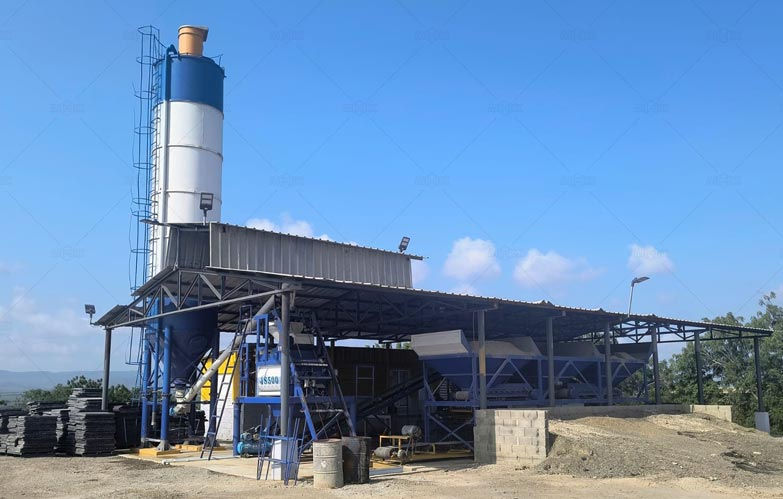How Predictive Maintenance Reduces Downtime Risks at Peruvian Concrete Batching Plants
- Aimix maquina

- 20 ago
- 4 Min. de lectura
Predictive maintenance is transforming how concrete producers manage equipment health and uptime. For Peruvian contractors and plant operators facing tight project schedules and high operating costs, shifting from reactive to predictive strategies can be a game changer. This article explores practical predictive maintenance approaches, the benefits they deliver for concrete batching plants in Peru(planta de concreto Perú), and why forward-looking owners should care about implementing them today.
Why Predictive Maintenance Matters for Concrete Plants
Concrete batching equipment operates in harsh conditions: dust, abrasive aggregates, heavy loads, and frequent start–stop cycles. Traditional maintenance models — fixing things only after they break or following rigid time-based service intervals — expose plants to unexpected downtime, delayed deliveries, and ballooning repair bills. Predictive maintenance uses real-time data and analytics to forecast failures before they happen, allowing teams to plan interventions during low-impact windows and maintain continuous production.

Key Technologies Driving Predictive Maintenance
Condition Monitoring Sensors and IoT Integration
Modern sensors monitor vibration, temperature, motor current, and bearing health. When connected via IoT platforms, these sensors stream continuous data to cloud dashboards where anomalies are flagged. For a concrete plant in Peru, installing sensors on mixers, conveyors, and pumps creates a live health picture across the operation, empowering managers to react to small deviations before they escalate.
Data Analytics and Machine Learning
Collecting data is only the first step. Analytics and machine learning models detect patterns that predict specific component failures — for example, a bearing wearing out or a motor overload trend. Over time, these models become more accurate, reducing false alarms and improving maintenance scheduling. Analytics also help optimize spare parts inventories so you keep critical items on hand without overstocking.
Remote Dashboards and Mobile Alerts
Real-time dashboards and mobile alerts ensure that technicians and managers receive actionable information wherever they are. For contractors operating multiple sites — from a fixed concrete plant Peru location to mobile setups near a roadworks project — remote visibility means faster, more coordinated responses and reduced need for on-site expert presence.
Concrete Plant Case: Benefits for Peruvian Operations
Minimized Unplanned Downtime
Peruvian projects often operate within tight timelines and remote locations where replacement parts and skilled technicians can be hard to source quickly. Predictive maintenance changes that dynamic by identifying issues early and scheduling repairs during planned downtime, which significantly reduces emergency stoppages and keeps projects on track.
Lower Maintenance Costs and Longer Equipment Life
By targeting maintenance to when it’s actually needed, predictive approaches reduce unnecessary part replacements and labor costs. Predictive care also prevents damage cascade effects (for example, a damaged bearing that later wrecks a gearbox), extending the useful life of expensive assets such as mixers and batching conveyors.
Better Resource Allocation and Safety
Planned interventions allow managers to allocate labor and parts efficiently. Health alerts and diagnostic reports also improve safety by preventing catastrophic failures that could endanger staff or damage nearby equipment.
Implementing Predictive Maintenance at Your Plant
Start with a Pilot Program
Choose a critical machine (e.g., the main mixing unit) and install basic vibration and temperature sensors. Connect these to a simple dashboard and run the pilot for several months to gather baseline data. This low-risk approach demonstrates value quickly and builds internal confidence.
Integrate with Existing Control Systems
Many modern batching plants already have PLCs and SCADA systems. Integrating sensor data with these existing controls creates a single pane of glass for operations and maintenance. If you operate multiple facilities — including comparing performance with concrete plants Chile(plantas de hormigón Chile) counterparts — this centralized approach yields comparable KPIs and benchmarking benefits.
Train Staff and Build Maintenance Protocols
Predictive maintenance only works when teams know how to interpret alerts and act. Develop clear protocols for prioritizing alerts, ordering parts, and scheduling repairs. Offer hands-on training so technicians can trust the system and respond promptly.
Considerations for Mobile and Small-Scale Plants
Mobile batching units present unique challenges: frequent site moves, vibration from transport, and variable feedstock. Yet they also benefit greatly from predictive maintenance because unexpected failures during a job can be especially costly. When evaluating investments, compare upfront costs against metrics like reduced downtime and improved reliability. If you’re sourcing portable solutions, research models and quotes to assess the impact on your budget and operations — including comparisons of mobile concrete plant price(planta de concreto móvil precio) and how that investment relates to lifecycle savings through fewer breakdowns.
Conclusion
Predictive maintenance is not a buzzword — it’s a practical strategy that reduces downtime risk, lowers costs, and extends equipment life for batching plants across Peru. By combining condition-monitoring sensors, analytics, and remote visibility, plant operators can shift from firefighting to foresight. Whether you run a fixed concrete plant Peru facility or manage a fleet that connects with regional players like concrete plants Chile, predictive maintenance delivers measurable returns and greater peace of mind. Investing now in sensors, data platforms, and training can pay off quickly through fewer emergency repairs, more predictable schedules, and a stronger reputation for reliability on every project.



Comentarios